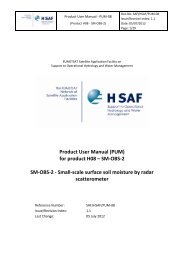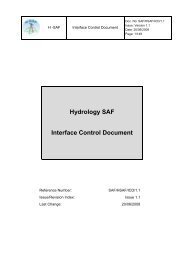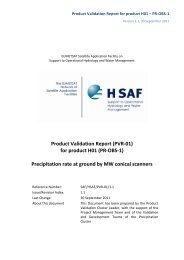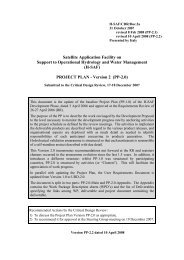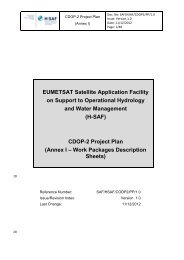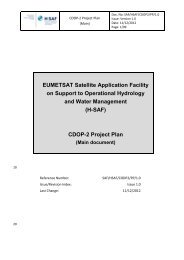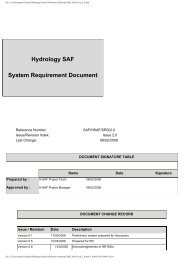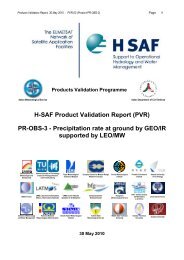Ahmet Ãztopal, Albero Mugnai, Daniele Casella, Marco ... - H-SAF
Ahmet Ãztopal, Albero Mugnai, Daniele Casella, Marco ... - H-SAF
Ahmet Ãztopal, Albero Mugnai, Daniele Casella, Marco ... - H-SAF
You also want an ePaper? Increase the reach of your titles
YUMPU automatically turns print PDFs into web optimized ePapers that Google loves.
4.3. The CDRD Retrieval AlgorithmEspecially, Bayesian methodology helps to retrieve the precipitation indicators fromsatellite-borne microwave radiometers coupled with the Cloud Radiation Databases(CRDs) and they are composed of thousands of detailed microphysical cloud profiles.These are taken from Cloud Resolving Model (CRM) simulations, including thecorresponding brightness temperatures (TBs), which is calculated by applying radiativetransfer schemes to the CRM outputs. CRD’s play the role of generator for the CRMsimulations of past precipitation events. Subsequently, they can be used for the analysisof new events’ satellite observations.Figure 4.4 indicates the block diagram of our CDRD Bayesian algorithm, where thefollowing significant points must be taken into consideration for relevant interpretations(Sanò et al,2010).1) Prior to the estimation of TB measurements it is necessary to process the TBsmeasured by SSM/I or SSMIS (data processing block). This has to be done for eachchannel at the same geographical latitude and longitude position, Such interpolationprocedures are helpful for the low resolution channels.2) A “screening procedure” is employed for the data analysis for the decisionwhether to reject areas (pixels) either having incorrect TB values due to sensor errors orrecognized as areas without rain or with a very low probability of rain.3) The pixel selection is achieved by inversion algorithm, which uses a Bayesiandistance concept between the measured multi-frequency TB vector and all simulated multifrequencyTB vectors of the CDRD database.Figure 4.4. Block diagram of the CDRD Bayesian algorithm.11




